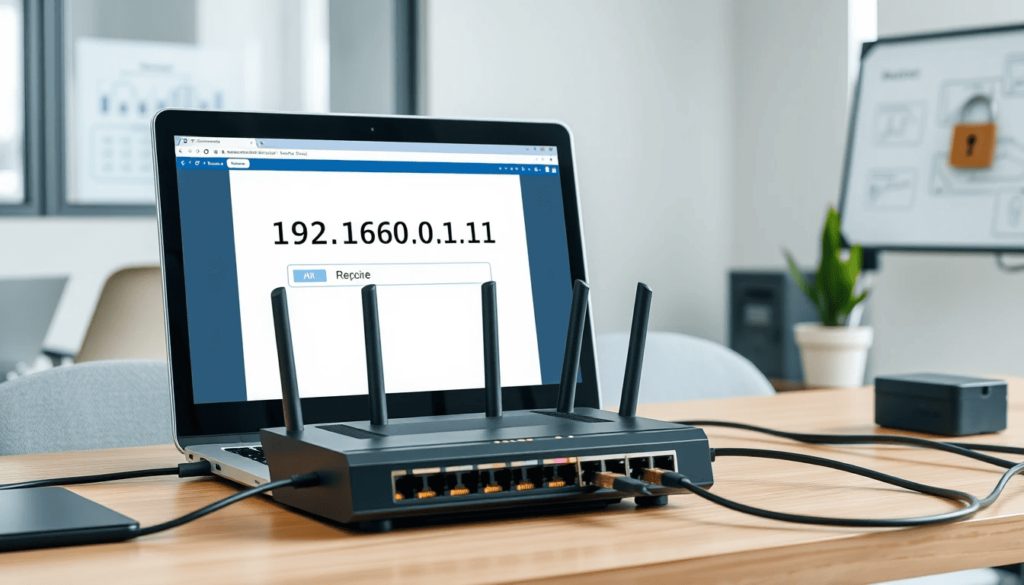How to configure router for small business use on 192.168.0.1 and 192.168.1.1

Configuring a router for small business use is crucial for maintaining efficient network operations. Understanding how to navigate the settings on the common IP addresses 192.168.0.1 and 192.168.1.1 can significantly enhance your network performance.
In this guide, we will explore the steps involved in configuring routers, including essential security practices and maintaining static IP addresses for devices like printers.
- How to login to 192.168.1.1?
- What are the key differences between 192.168.0.x and 192.168.1.x?
- How do I set up VLANs on my RV-325 router?
- What are the best security practices for small business networks?
- How can I maintain static IP addresses for printers?
- What are the steps to reset my router to factory settings?
- What should I do if I encounter issues switching from 192.168.1.1 to 192.168.0.1?
How to login to 192.168.1.1?
To access your router's settings, you typically begin by logging into the admin panel at 192.168.1.1. This is the standard gateway address for many routers.
First, ensure that your device is connected to the router, either via Ethernet or Wi-Fi. Open a web browser and type in the IP address. You will be prompted to enter your router's credentials, usually a username and password. If you haven’t changed them, the defaults can often be found in the router's manual.
If you forget your login credentials, there are methods to recover them, usually involving a factory reset. However, this will erase all custom settings, so use this as a last resort.
What are the key differences between 192.168.0.x and 192.168.1.x?
The 192.168.0.x and 192.168.1.x ranges represent different subnet configurations. While both are private IP address ranges, they serve different purposes in network segmentation.
- 192.168.0.x is often used for home networks.
- 192.168.1.x is commonly utilized for small business networks.
- Switching between these two ranges may require adjustments in settings, including DHCP and static IP assignments.
Understanding these differences is essential when configuring your router for optimal performance. Network devices may require specific IP addresses to function correctly, making proper management crucial.
How do I set up VLANs on my RV-325 router?
Setting up VLANs on your RV-325 router enhances security and efficiency within your network. VLANs (Virtual Local Area Networks) allow you to segment your network traffic, which is beneficial for isolating sensitive data.
To configure VLANs, you can follow these steps:
- Access the router’s web interface at 192.168.1.1.
- Navigate to the VLAN settings section.
- Create new VLANs by defining their IDs and associating them with specific ports or wireless networks.
- Apply the changes and ensure devices are configured to use the correct VLAN.
Configuring VLANs not only improves performance but also enhances security by limiting access to sensitive resources.
What are the best security practices for small business networks?
Implementing robust security measures is critical in safeguarding your small business network. Here are some best practices to consider:
- Enable WPA2 encryption to protect your Wi-Fi network.
- Use strong, unique passwords for your router and network devices.
- Regularly update your router’s firmware to patch vulnerabilities.
- Disable remote management features that are not needed.
By following these practices, you can significantly reduce the risk of unauthorized access and potential data breaches.
How can I maintain static IP addresses for printers?
Maintaining static IP addresses for your printers is essential for ensuring consistent connectivity within your network. Here’s how you can achieve this:
To maintain a static IP for your printers, follow these steps:
- Log into your router at 192.168.0.1 or 192.168.1.1.
- Navigate to the DHCP settings section.
- Add a reservation for the printer’s MAC address, specifying the desired static IP address.
This setup ensures that your printer always receives the same IP address, preventing connectivity issues often caused by dynamic IP assignment.
What are the steps to reset my router to factory settings?
Resetting your router to its factory settings can resolve various issues. Here’s how to do it safely:
- Locate the reset button, usually found on the back or bottom.
- Press and hold the button for about 10 seconds using a paperclip or similar tool.
- Wait for the router to reboot completely.
- Reconnect to the default network and reconfigure your settings.
A factory reset can help you troubleshoot persistent problems, but remember to back up your settings if possible.
What should I do if I encounter issues switching from 192.168.1.1 to 192.168.0.1?
Switching between IP addresses can sometimes lead to connectivity issues. Here are some steps to consider if you encounter problems:
- Ensure that your device's network settings are correctly configured for the new IP range.
- Check if your router supports both subnets and adjust the DHCP settings accordingly.
- Verify the configuration of your VLANs if applicable, as misconfigurations can lead to connectivity issues.
By following these troubleshooting tips, you can minimize downtime and maintain a productive work environment.
Overall, understanding how to configure router for small business use on 192.168.0.1 and 192.168.1.1 is crucial for ensuring a secure and efficient network. Whether setting up VLANs, managing static IP addresses, or implementing best security practices, these steps will help optimize your network performance.

Deja una respuesta